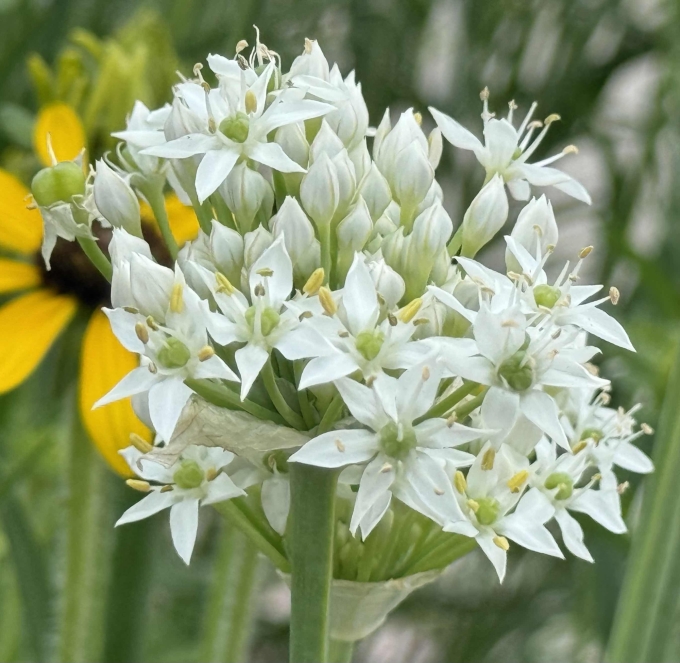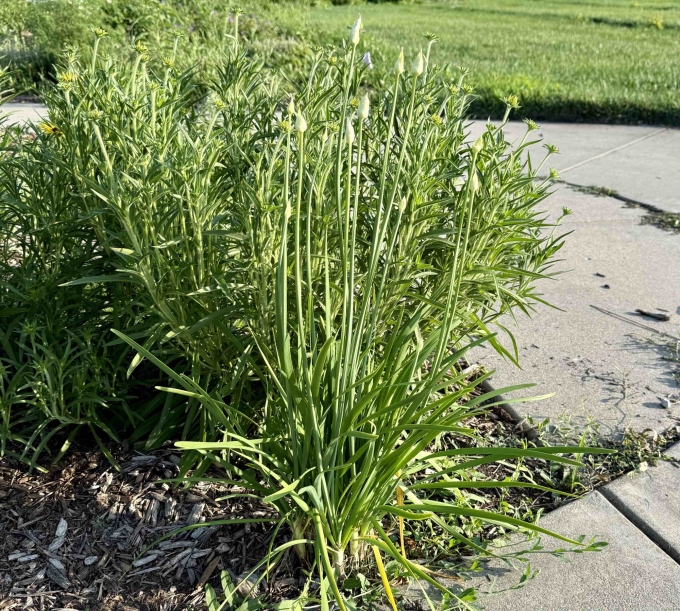Common Name: Prairie Onion
Family: Amaryllidaceae
Plant Type: Bulbous Perennial
Native Range: Central North America, including Nebraska
Hardiness Zones: 3–8
Height: 1.0 to 1.5 feet
Spread: 0.5 to 1.0 feet
Bloom Time: July to September
Bloom Description: Rounded clusters of reddish-pink, star-like flowers
Sun Exposure: Full sun to part shade
Water Needs: Dry to medium
Soil Preference: Well-drained, rocky or sandy soils
Management Level: Low
Suggested Use: Naturalize, prairie gardens, rock gardens
Attracts: Pollinators, including bees and butterflies
Tolerates: Deer, drought, shallow-rocky soils, dry conditions
Notable Features: Fragrant foliage, showy blooms, onion-like scent
Nebraska Growing Notes:
Prairie onion is a drought-tolerant, native perennial bulb that thrives in Nebraska’s rocky prairies, open meadows, and sunny hillsides. It prefers lean, well-drained soils and performs best in full sun, though it can tolerate some light shade. This plant naturalizes well through both self-seeding and bulb offsets, making it a strong candidate for naturalized and low-maintenance landscapes across the state. Like other native Alliums, it offers mid-to-late summer color when many other prairie plants are past peak bloom.
Leaves often begin to decline by flowering time, and flower stalks rise directly from the bulbs. Cutting back spent blooms before seeds mature can reduce unwanted spread and preserve the plant's tidy appearance.
Landscape Use:
Excellent in Nebraska’s native plant gardens, rock gardens, xeriscapes, and pollinator beds. Adds texture, fragrance, and summer interest to prairie-style designs and low-input borders. Works well in spaces where soil conditions are challenging but drainage is good.
Caution:
Prairie onion can spread readily in ideal conditions. While not invasive, it may outcompete more delicate species if not monitored. All parts of the plant have an onion-like aroma and may be browsed by curious animals or humans, though it's not typically cultivated for culinary use.
Garden Locations:
Bed(s) 6, 7
Sources:
https://plants.usda.gov/plant-profile/ALST




